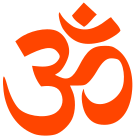
Sanatana Dharma, often translated as "the natural and eternal way of living," is the term Hindus use to describe their religion, Hinduism. It represents timeless principles and practices that guide the lives of its followers, often called Sanatanis. Considered a universal code of conduct for all intelligent beings, these laws apply to humans, gods, asuras, and other conscious species. While some view Sanatana Dharma as distinct from Hinduism, others believe the terms are interchangeable, with Hinduism being a nickname for Sanatana Dharma.
Sanatana Dharma, the foundation of Hinduism, traces its roots to the ancient Vedic period (1500–500 BCE) through the Vedas, emphasizing eternal truths and cosmic order. It evolved during the Upanishadic era with philosophical insights on the self and ultimate reality, followed by moral teachings in epics like the Mahabharata and Ramayana. Diverse philosophical schools and bhakti (devotion) movements shaped its classical period, while it adapted during medieval times despite foreign influences. In the modern era, reformers like Swami Vivekananda emphasized its universal values, spreading its teachings globally through yoga, meditation, and Vedantic philosophy. Its adaptability ensures its timeless relevance.
The son of Shiva and Parvati, the pot-bellied elephant god Ganesha is the lord of success, knowledge, and wealths.He is typically depicted riding a mouse, who assists the deity in removing barriers to success, whatever the endeavor.
Shiva represents death and dissolution, destroying worlds so they may be recreated by Brahma. But he is also considered the master of dance and regeneration. When he is not represented in his blue-skinned human form, Shiva is often depicted as a phallic symbol called the Shiva Lingam.
One of the most beloved Hindu gods, blue-skinned Krishna is the deity of love and compassion. He is frequently depicted with a flute, which he uses for its seductive powers. Krishna is widely revered among Hindus, and his followers are known as Vaishnavas.
Rama is the god of truth and virtue and another avatar of Vishnu. He is considered the perfect embodiment of humankind: mentally, spiritually, and physically. Rama is widely believed to be an actual historical figure whose exploits form the great Hindu epic "Ramayana." Hindu faithful celebrate him during Diwali, the festival of light.
Hanuman is worshiped as a symbol of physical strength, perseverance, service, and scholarly devotion. This divine primate aided Lord Rama in his battle against evil forces.n times of trouble, it is common among Hindus to chant the name of Hanuman or sing his hymn, "Hanuman Chalisa." Hanuman temples are among the most common public shrines found in India.
The peace-loving deity of the Hindu Trinity, Vishnu is the preserver or sustainer of life. He represents the principles of order, righteousness, and truth. His consort is Lakshmi, the goddess of domesticity and prosperity.
Lakshmi's name comes from the Sanskrit word laksya, meaning an aim or goal. She is the goddess of wealth and prosperity, both material and spiritual. Lakshmi is depicted as a four-armed woman with a golden complexion, holding a lotus bud as she sits or stands upon a massive lotus blossom. The deity of beauty, purity, and domesticity, the image of Lakshmi is often found in Hindu homes.
Durga is the mother goddess and she represents the fiery powers of the gods. She is the protector of the righteous and destroyer of the evil, usually portrayed as riding a lion and carrying weapons in her many arms.
Kali, also known as the dark goddess, appears as a fierce four-armed woman, her skin blue or black. She stands atop her husband Shiva, who lies calmly beneath her feet. Bloodsoaked with her tongue hanging out, Kali is the goddess of death and represents the ceaseless march of time toward doomsday. Being a goddess, in the end, she has a lot of empathy and love for her devotees.
Saraswati is the goddess of knowledge, art, and music. She represents the free flow of consciousness. The daughter of Shiva and Durga, Saraswati is the mother of the Vedas. Saraswati endows human beings with the powers of speech and wisdom.
Hindus believe in a universal god, Brahman, the Supreme Being encompassing all existence. Brahman manifests through numerous gods and goddesses, known as deva and devi, each representing specific aspects of this divine reality. Central to Hindu worship is the Holy Triad: Brahma, the creator; Vishnu, the sustainer; and Shiva, the destroyer, who together symbolize the cycle of creation, preservation, and destruction. These deities may appear as avatars—embodiments of divine energy—to fulfill specific purposes. Many of these gods and goddesses, such as those in the Holy Triad, are celebrated as important and independent figures in Hindu tradition.